Was ist Informatik? – Eine andere Sichtweise
Die gängigen Erklärungen zu “Was ist Informatik?” – etwa von der Gesellschaft für Infomatik, der TU Dresden, oder auf Wikipedia – machen es einem schwer, sic...
|
Below are some extracts from this paper or my thesis:
| 950 | 1000 | 1010 | 1650 | 1750 | 1900 | 1910 | 1940 | 2100 |
|---|---|---|---|---|---|---|---|---|
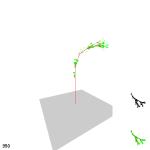 |
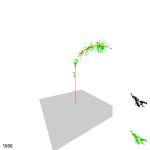 |
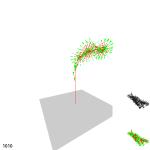 |
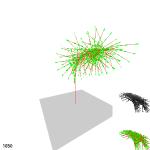 |
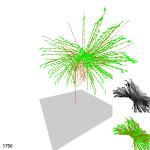 |
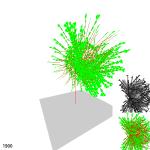 |
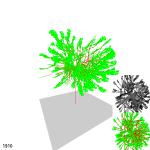 |
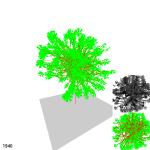 |
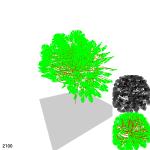 |
Early evolution develops small phenotypes. Here, the interplay between the {\sf N}- and the {\sf F}-operator starts. |
The {\sf N}-operator encodes fan-like structures attached at various places of the phenotype, the {\sf F}-operator encodes the spokes of these fans. |
Adaptation of these fans is a beautiful example for correlated exploration: the {\sf N}-operator encodes more spokes; the {\sf F}-operator makes them longer. |
The fan spokes become longer and longer. Note that one {\sf N}- and two {\sf B}-operators are redundant. |
Leaves are attached to each segment of the long arms; similar to generation 4025 of the C-trial. |
Two leaves are attached at the tip of each arm. The genome becomes to complex to be easily understood. |
Now three leaves are attached at each tip. |
Now six leaves.. |
The plant becomes more and more dense and the genome size is optimized. |
| 3000 | 3800 | 4000 | 4025 | 4400 | 4500 | 5100 | 5400 | 5500 | 7500 | 8300 |
|---|---|---|---|---|---|---|---|---|---|---|
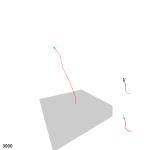 |
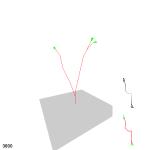 |
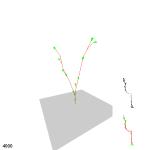 |
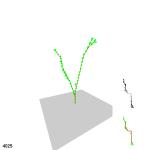 |
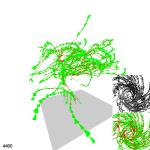 |
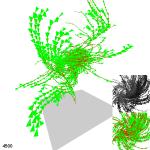 |
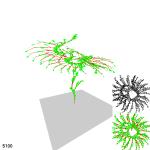 |
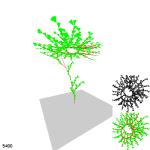 |
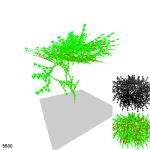 |
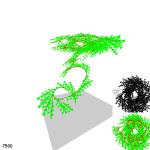 |
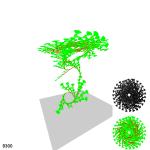 |
Over aeons not much happens... |
A first correlated phenotypic adaptation: the leaves along the stems pop up at once. |
Every stem segment is now encoded by the {\sf A}-operator, which attached a leave to each segment. |
The concept of `long arms' is exploited, fitness explodes, but the genome becomes too large and non-stable. |
The large genome makes exploration chaotic; the species will extinguish. |
A new concept with much shorter and stable genome takes over; the {\sf J}-operator becomes dominant. |
The new concept is further developed and exploited till the end... |
Earlier trials:
| 420 | 430 | 465 | 1650 | 1658 | 2560 | 3130 | 3280 |
|---|---|---|---|---|---|---|---|
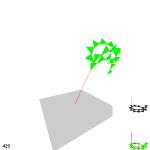 |
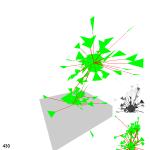 |
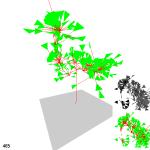 |
 |
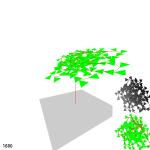 |
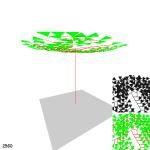 |
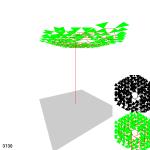 |
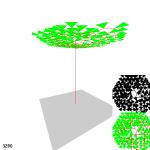 |
A simple phenotype where the recursive {\sf L}-operator encodes the regular 5-leaves-fans and the recursive {\sf F}-operator produces the long stem. |
Good fitness but all the phenotype is encoded in the huge axiom; mutability is too high. |
The previous innovation died out. |
Similar fitness as in generation 465, but the regular phenotype is encoded by the recursive {\sf C}-operator such that the genome size remains reasonable. |
The {\sf C}-operator was further developed leading to an efficient hexagonal structure; other operators further decrease the genome size. |
In addition to the {\sf C}-operator, the new recursive {\sf G}-operator makes the phenotype even more dense. |
| 180 | 195 | 200 | 205 | 210 | 220 | 380 |
|---|---|---|---|---|---|---|
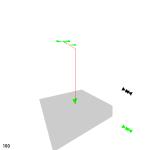 |
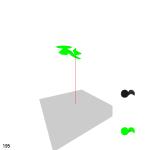 |
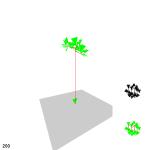 |
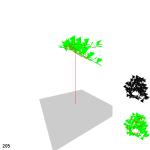 |
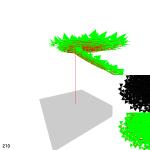 |
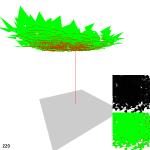 |
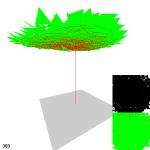 |
Early evolution in tiny steps. |
First usage of the recursive {\sf B}-operator. |
The {\sf B}-operator is further developed. |
The {\sf B}-operator induces larger growth since there are two {\sf B}'s on its rhs. |
Now there are three {\sf B}'s on the rhs. |
The encoding is optimized leading to almost optimal fitness and small genome size. |
Die gängigen Erklärungen zu “Was ist Informatik?” – etwa von der Gesellschaft für Infomatik, der TU Dresden, oder auf Wikipedia – machen es einem schwer, sic...